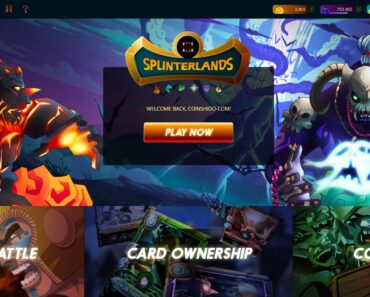What is ERC1155?
A year after its introduction, ERC-1155 has become an official Ethereum token standard and is available to be used by the entire Ethereum development community.
Exactly one year ago on June 17, 2018, the first version of the ERC-1155 Multi Token Standard to Ethereum’s Github repository and opened an issue for comments and feedback.
Since then, the standard has received an incredible amount of support with more than 50 revisions and 400 comments from the community, who have provided invaluable input and helped shape ERC-1155 into the most powerful Ethereum token standard ever written.
Today, ERC-1155 has progressed Final status and has become an official Ethereum token standard.
Now that it has been sealed as “final” by the Ethereum community, there are no more changes to be made to ERC-1155. It is the new accepted standard for minting fungible and non-fungible assets, and the development community can start building applications that integrate ERC-1155 assets with full confidence that the current standard is future-proof.
ERC-1155 is here to stay.
Ethereum Improvement Proposals
A few years ago, the Ethereum community agreed on a process for introducing new improvement proposals to the Ethereum ecosystem. An issue is raised by a community member on the Ethereum GitHub page and describes a new feature, process, or standard that benefits the blockchain and its surrounding neighborhood. Creating a standard meant that the larger Ethereum community would begin to support this new kind of token, and it would pave the way for quicker adoption in wallets, exchanges, games, and new projects using tokenized blockchain assets.
What is the difference between ERC721 and ERC1155?
ERC-1155’s smart contracts support an infinite number of tokens, whereas ERC-721 needs a new smart contract for each type of token. ERC-1155 also allows batch transfers of tokens, which can reduce transaction costs and times. With ERC-721, if you want to send multiple tokens, they happen individually.
While ERC-20 and ERC-721 tokens required a new smart contract deployed for each new “class” of token, the core concept behind ERC-1155 is that a single smart contract can govern an infinite number of tokens.
Think of this like a vending machine that holds a wide variety of soda, juices, and even snacks. A customer interacts with the machine using a single secure interface (inserting a coin, pressing a button), and the machine dispenses the goodies they have selected. In the same way, an ERC-1155 contract made for a game could contain a wide variety of items, from weapons and armor to health potions, magic scrolls, and more.
Each of these items could be “fungible,” having more than one copy available. Fungible tokens are used for divisible currencies (most ERC-20 tokens), and they’re also very useful for stackable items that don’t need to be differentiated, like a bundle of arrows for a bow.
One-of-a-kind tokens are called non-fungible tokens (NFTs). This structure allows every token to have its own unique parameters, history, and mirrors the real world. A pet dragon in a video game could be an NFT and have a unique name of its own, a power level, and a rich history in the game.
You can dive deeper into EIP-1155: Multi Token Standard at this link: https://eips.ethereum.org/EIPS/eip-1155.
Happy exploring the blockchain!
